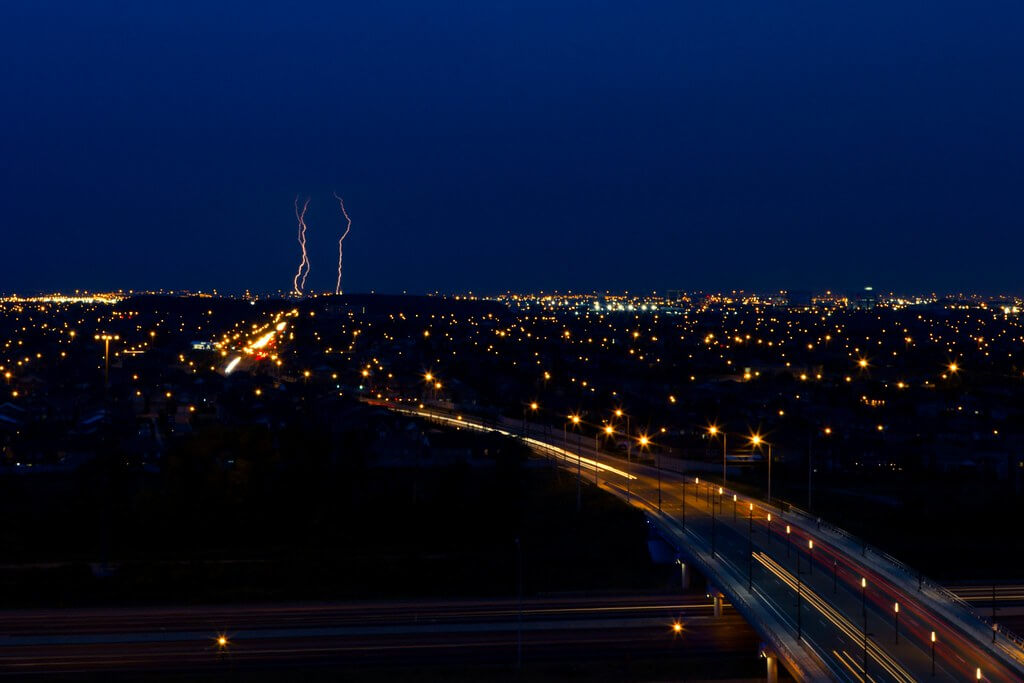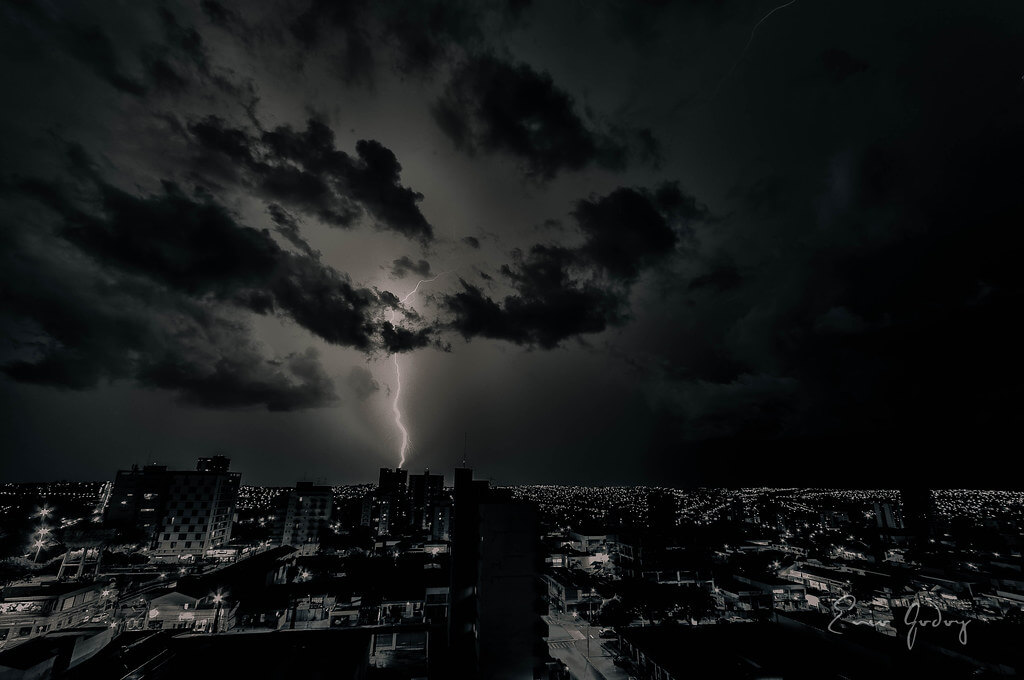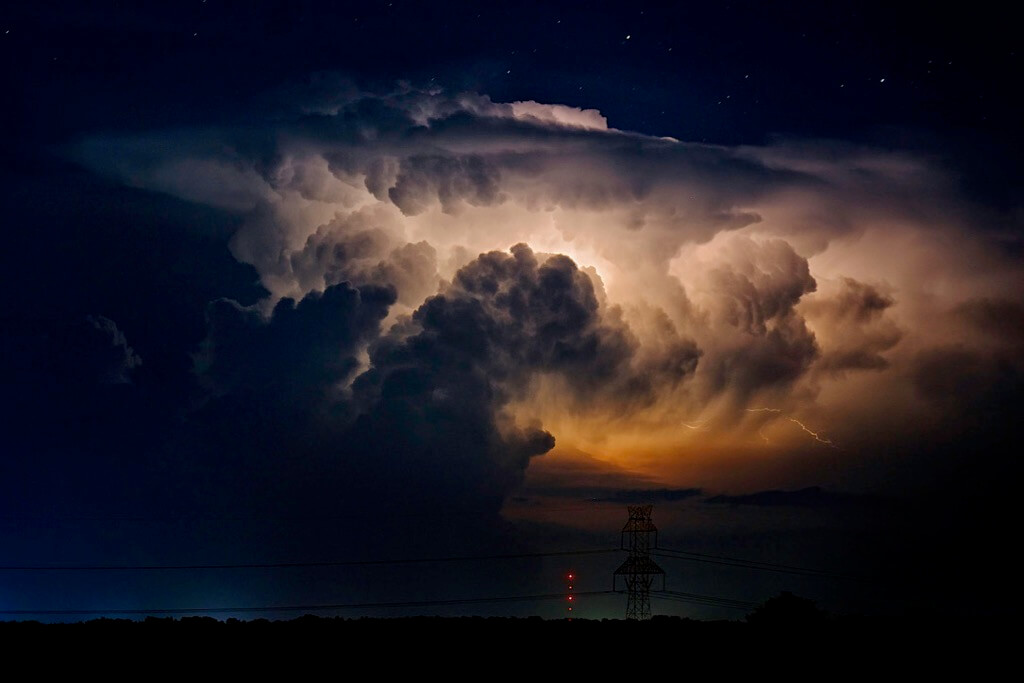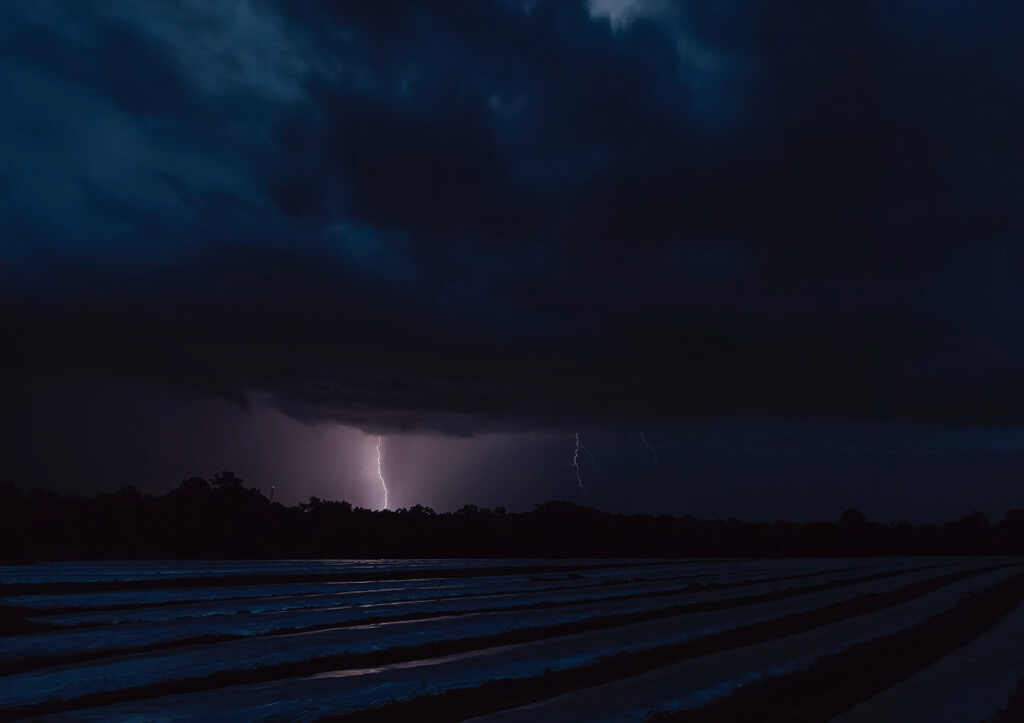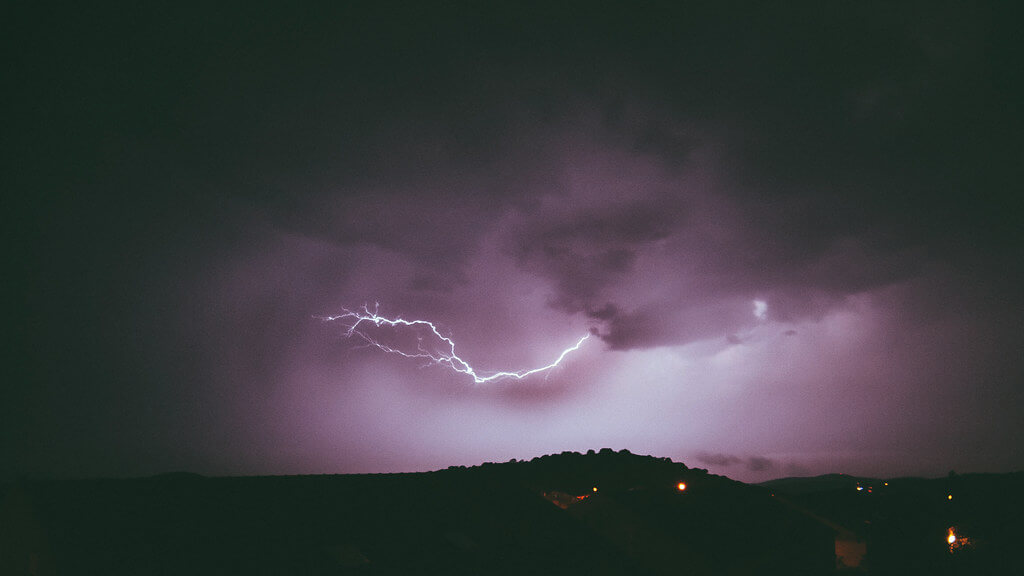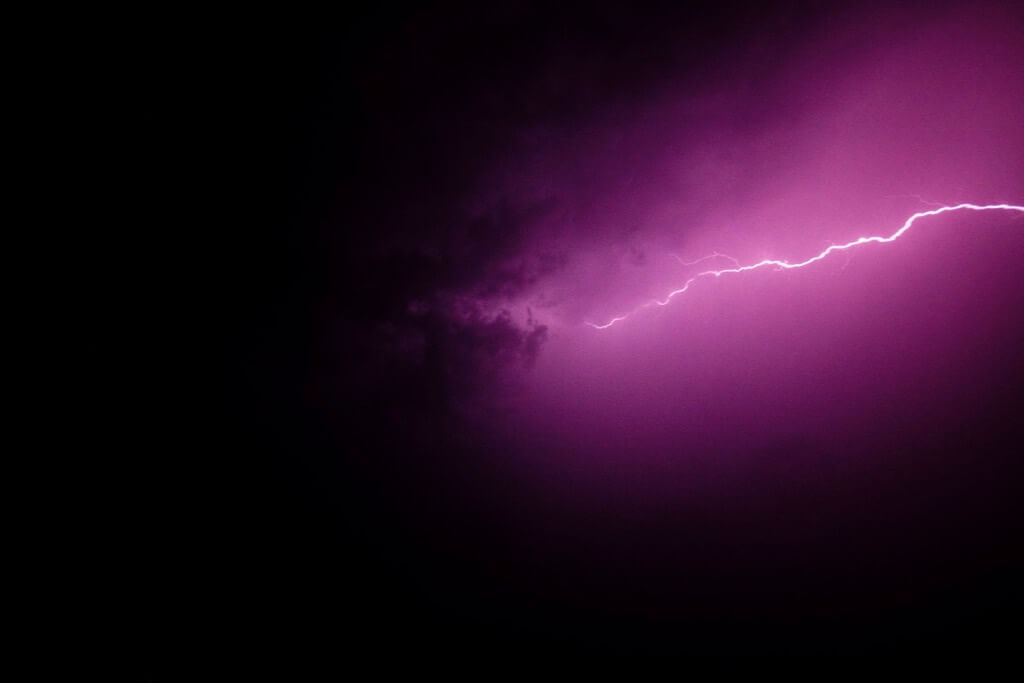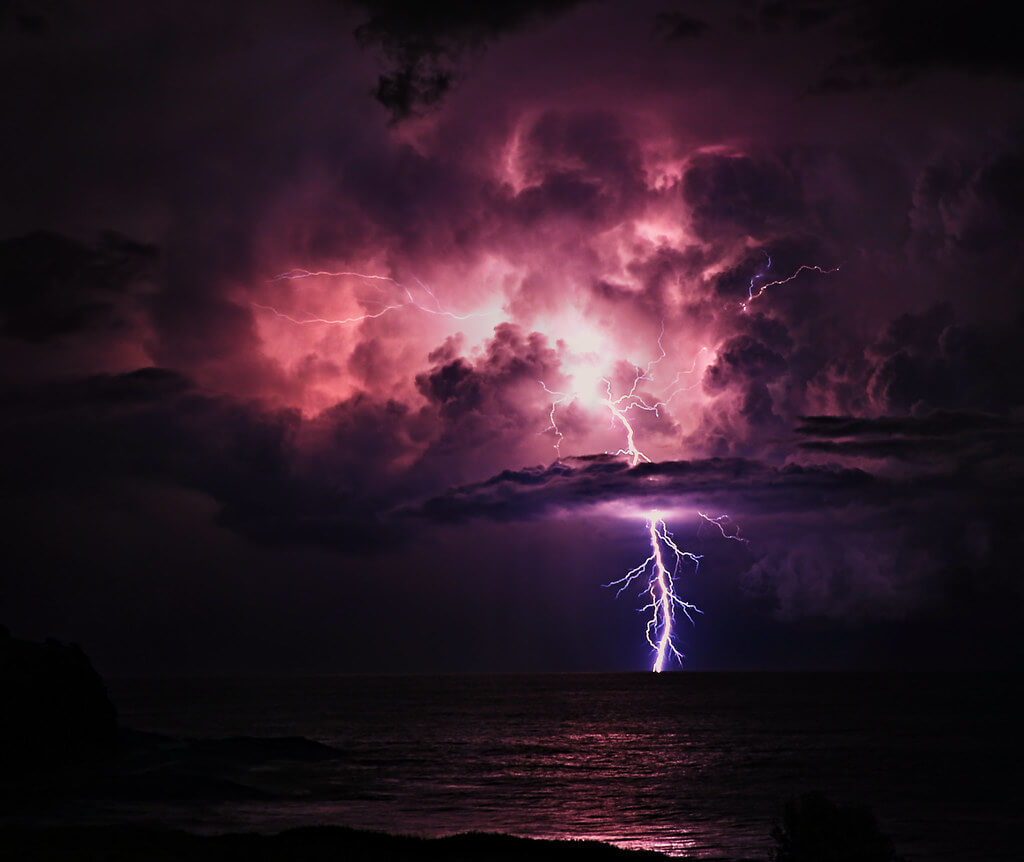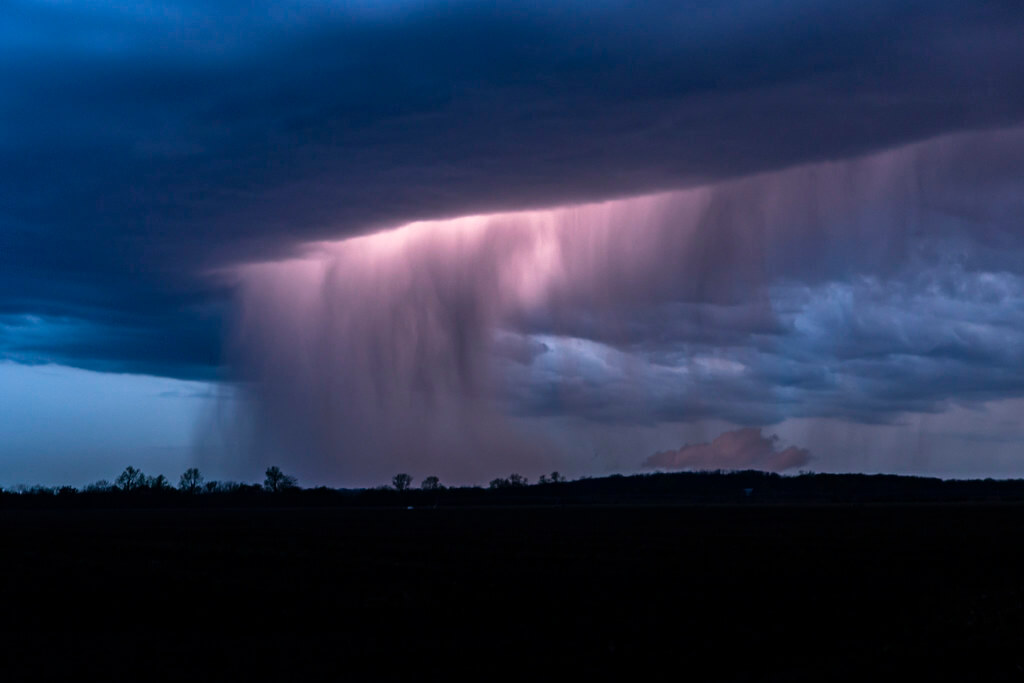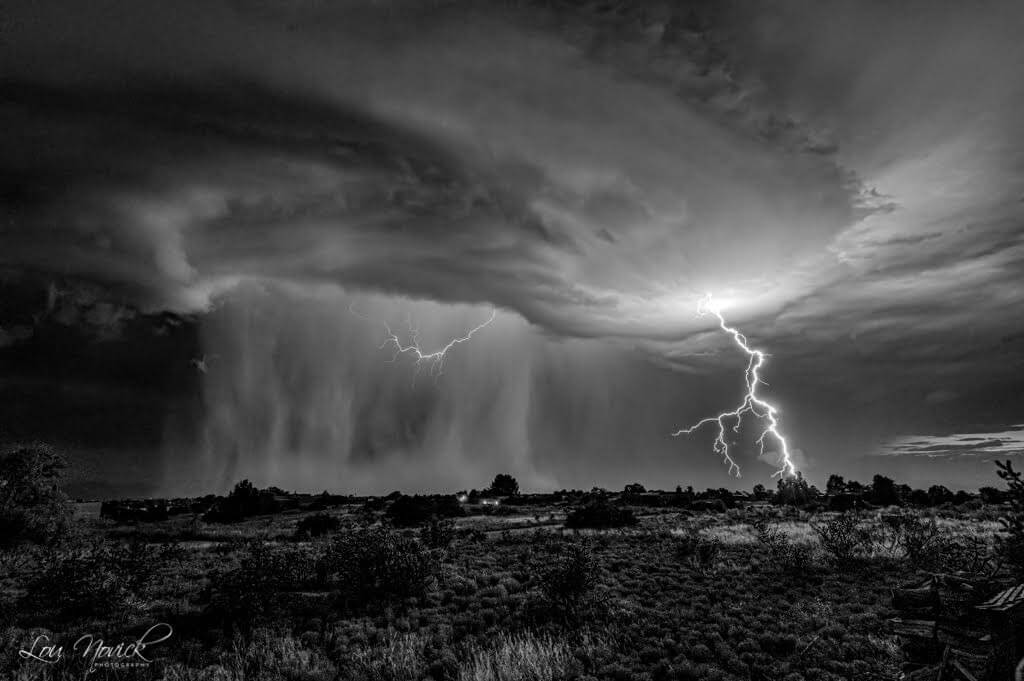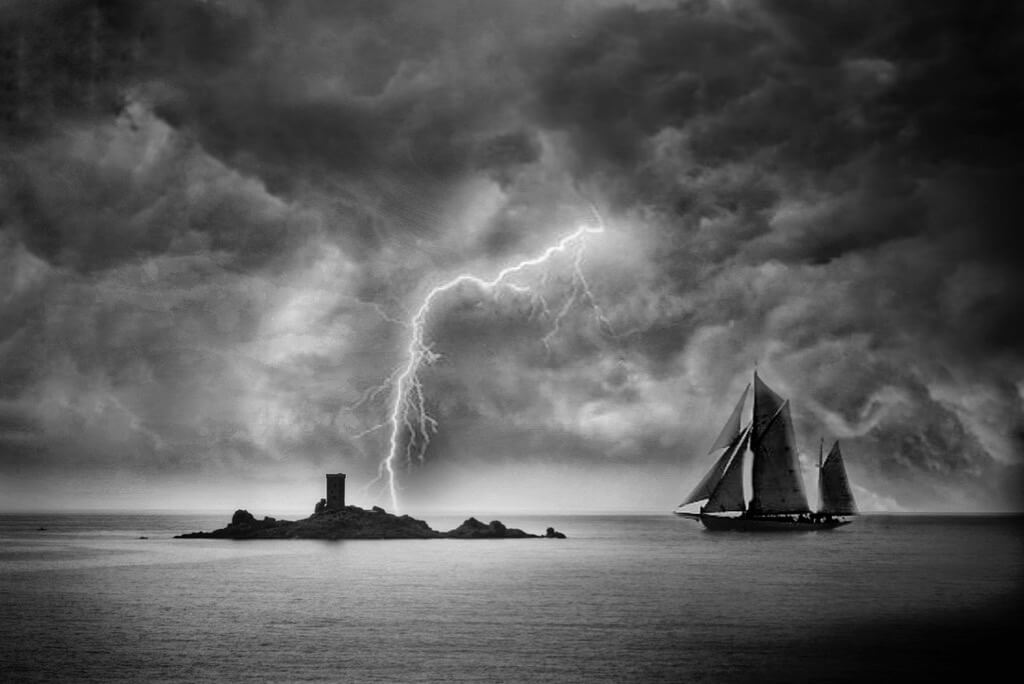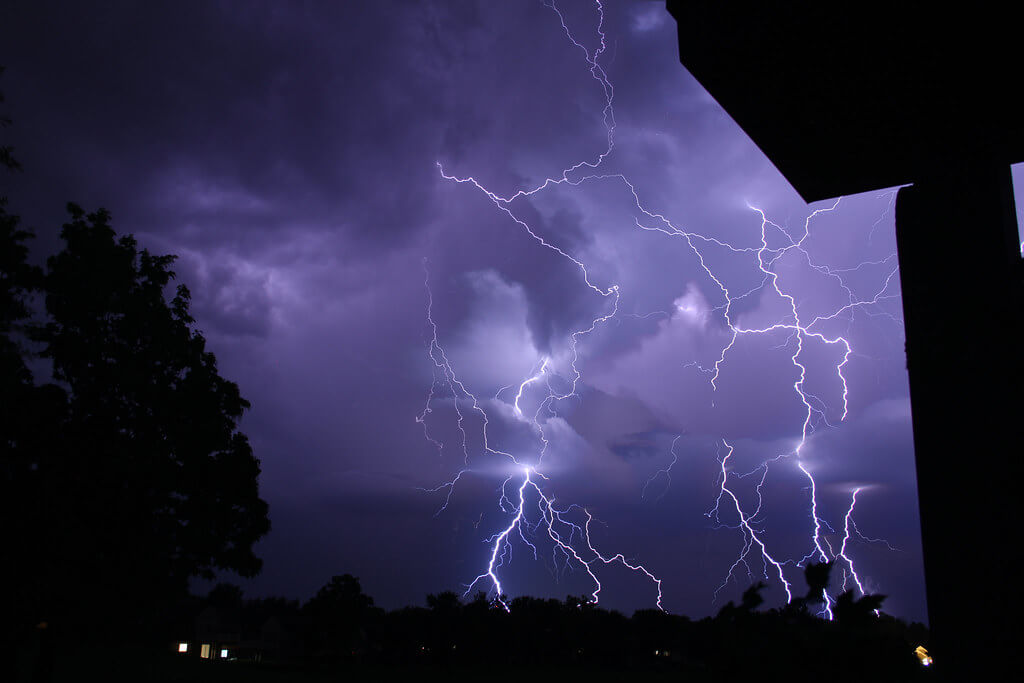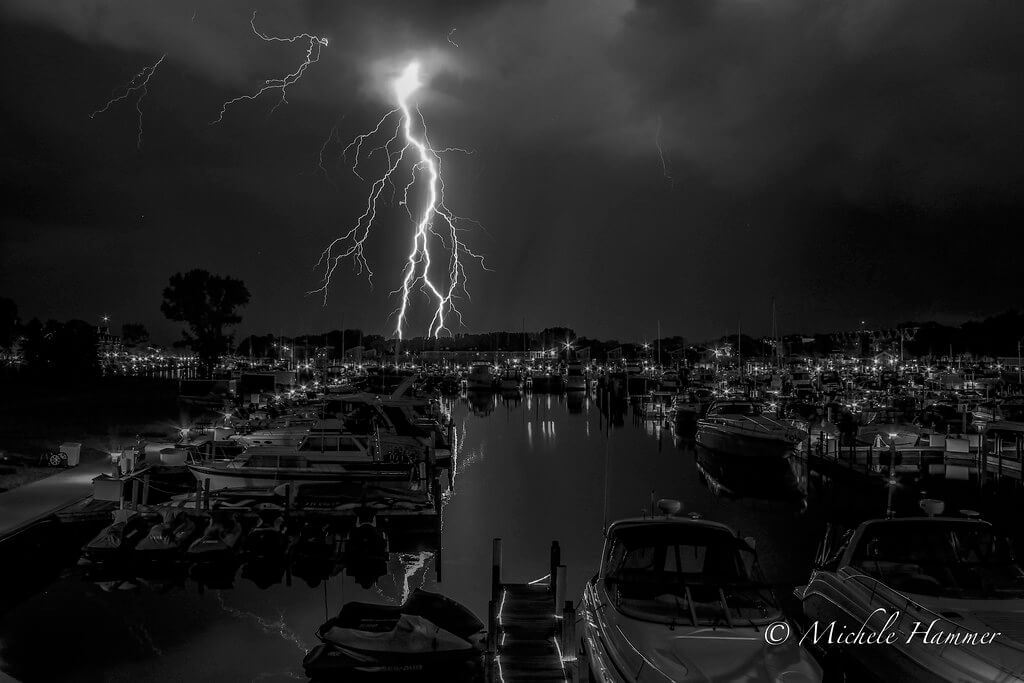Lightning can be a thrilling subject to shoot. Like all extreme weather, lightning storms have immense power that’s intimidating but also beautiful to capture in a photo.
Because lightning is so unpredictable, shooting it can feel like an adventure. But this unpredictability is also why you should be extra careful when photographing lightning. If you’re unsure how to stay safe, check out these tips for shooting in extreme weather, particularly the section about lightning.
As for camera settings and equipment, you can find a lot of great tutorials for shooting lightning online. This guide to shooting lightning from Jason Weingart Photography is especially good. It covers all the technical details you need to know to get sharp images of lightning.
Once you’ve read through and practiced those basics, you’ll hit another challenge: how should you compose your image? Where should you stand, and how much of the storm should you include in your frame?
While there’s no single composition that will work for every lightning storm, here are a few ideas you could try out depending on the situation you’re facing.
Ideas for Awesome Lightning Pictures
Shoot the lightning storm at a distance.
Shooting lightning at a distance is always a good idea for safety reasons, but staying safe isn’t the only reason to keep your distance from the storm. It’s also a good strategy for getting interesting compositions.
With the storm far away, you’ll be able to move around more freely and take your time finding a great composition. You’ll also be more likely to capture the lightning bolts, as more of the storm will be in your frame.
Aimee Molina
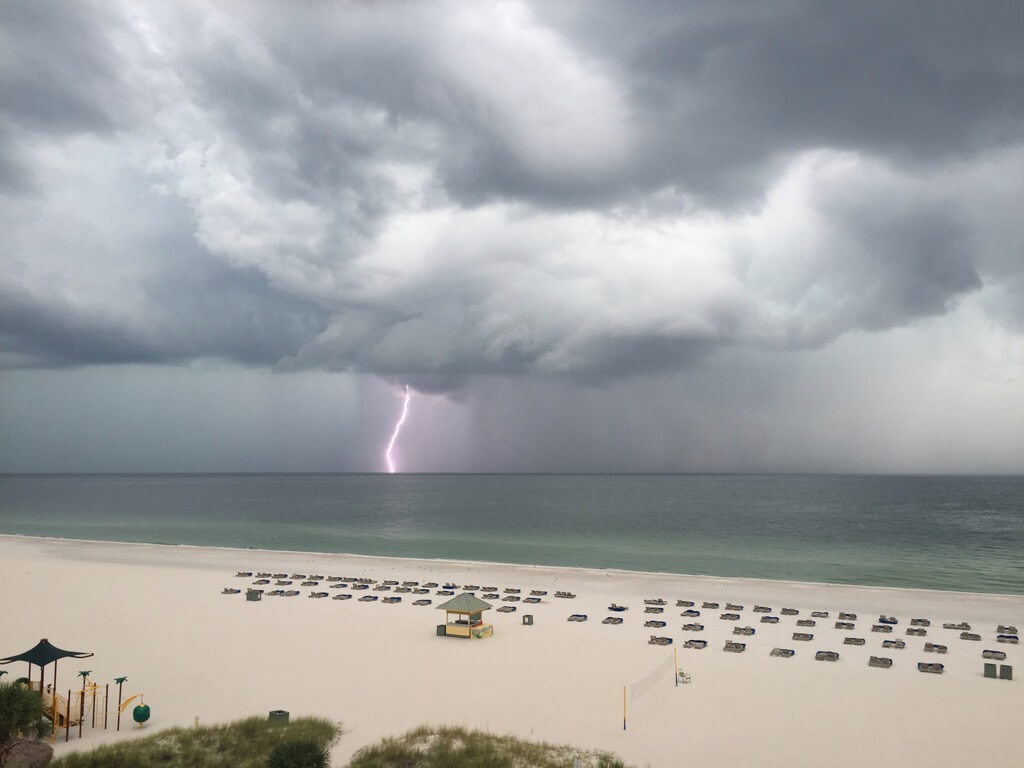
Brett Harrison – Lightning Across Port Phillip Bay in Melbourne
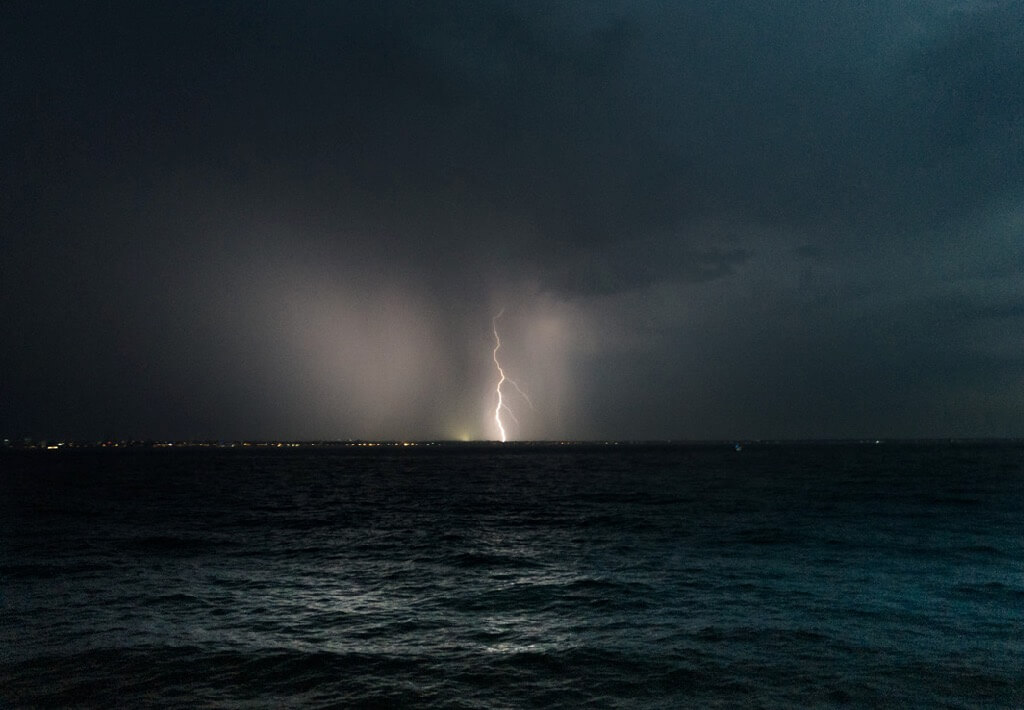
Carolyn D’Alessandro – Monsoon season, New Mexico
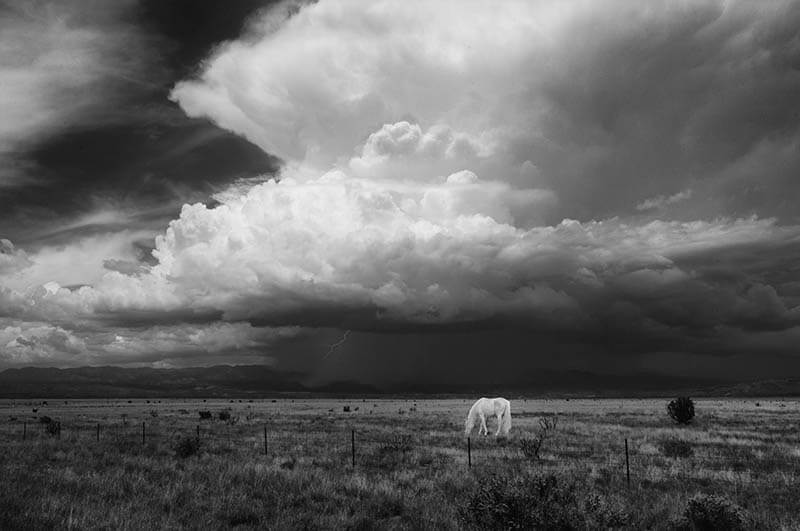
Photograph the lightning over city lights.
Some of the best lightning photos don’t focus on the lightning alone. Instead, they have other elements in the frame that give viewers a sense of context and narrative. Where is this storm happening? Who is experiencing it?
Shooting lightning over a bright city is one way to provide this context. Viewers will be able to connect with the setting, especially if they’re familiar with the city, making the spectacular lightning more meaningful.
CJ Burnell – Phenomenal Lightshow
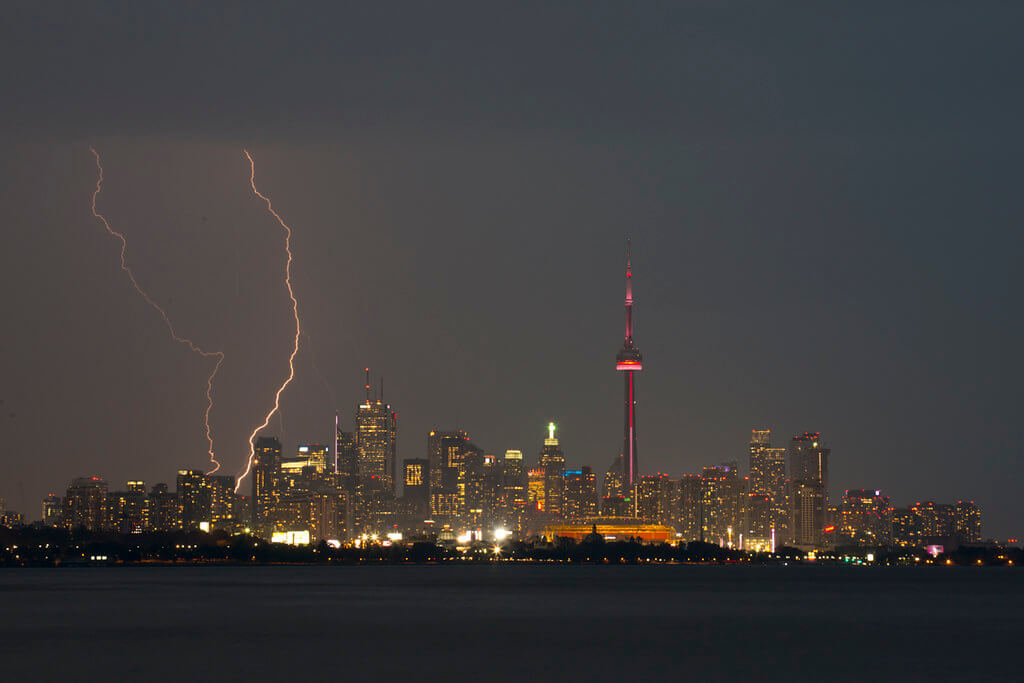
Fred Doerfler – Praiano, Italy
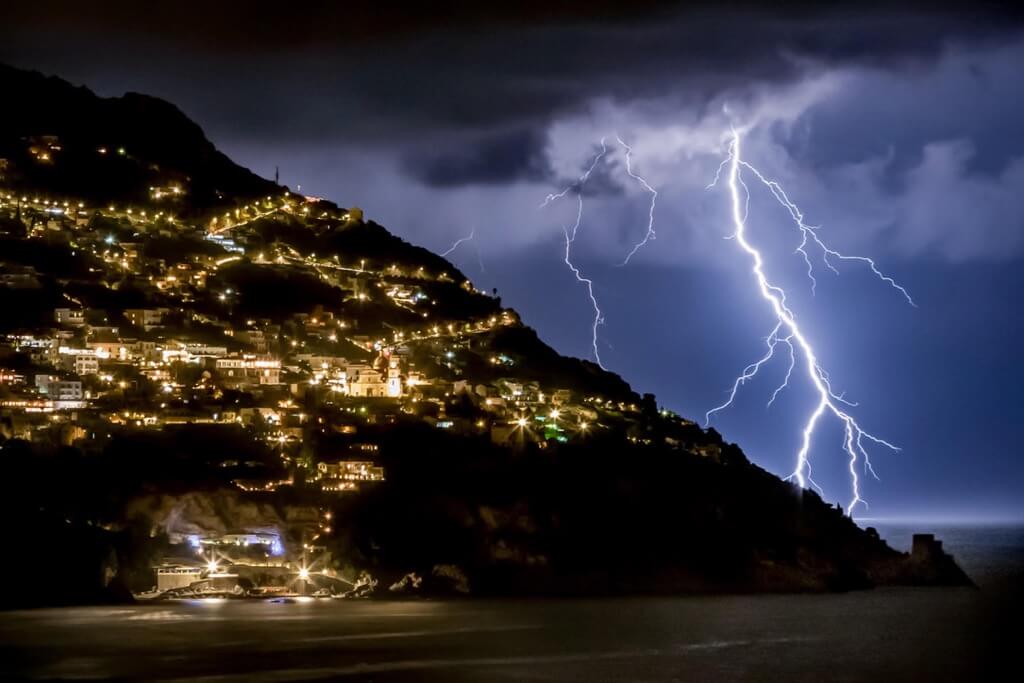
Enio Godoy – Lightning – Bauru
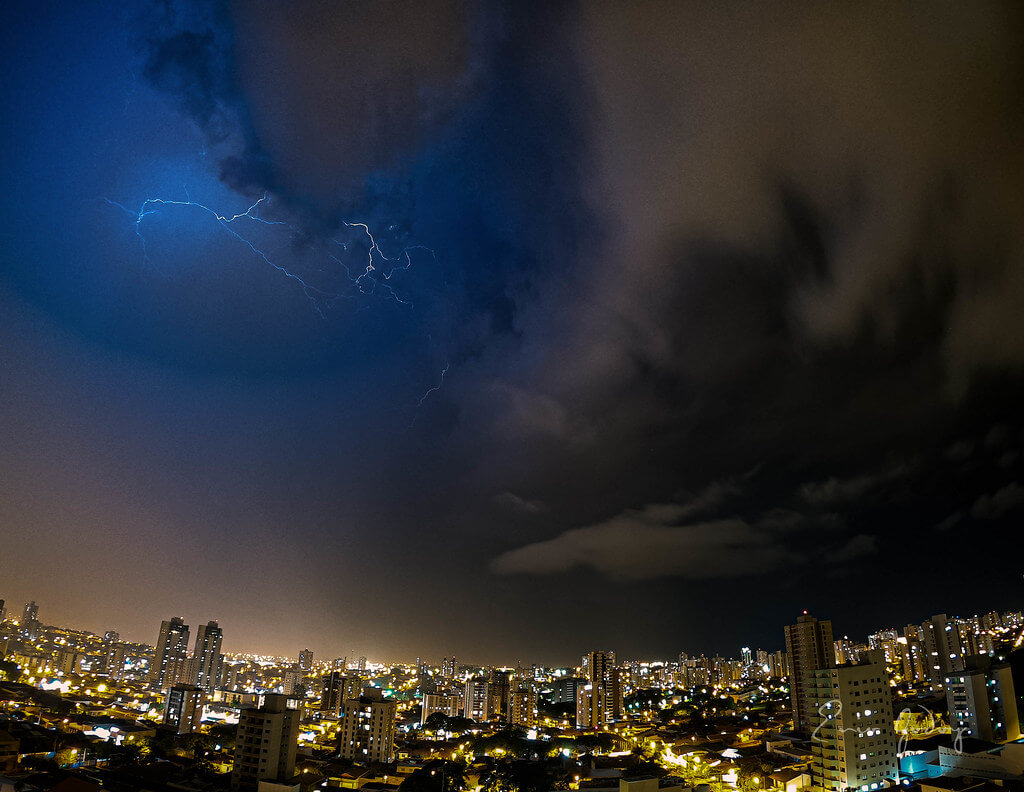
Try to photograph the stars.
Like city lights, stars can give a photo context as they show when the storm is happening: at night. They also hint that the photo was taken someplace distant from a city, since you can’t capture stars with light pollution.
Besides this context, stars create contrast in the photo between the dark, dangerous storm and the light, peaceful sky. Of course, the night sky is beautiful, too, which is already a good reason to capture it!
Ben Roffelsen – Distant Lightning and Falling Stars
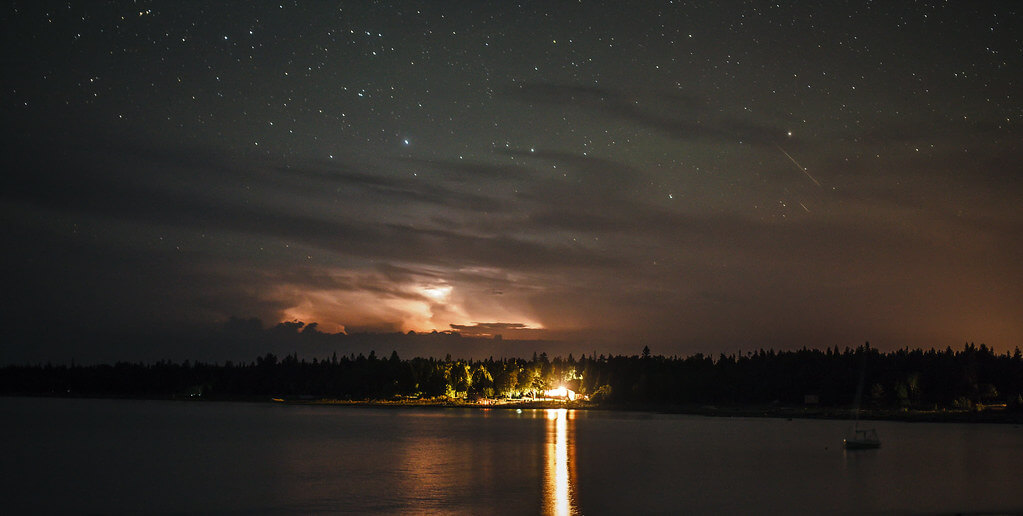
Stephen Humpleby – Avondale Discovery Farm Lightning
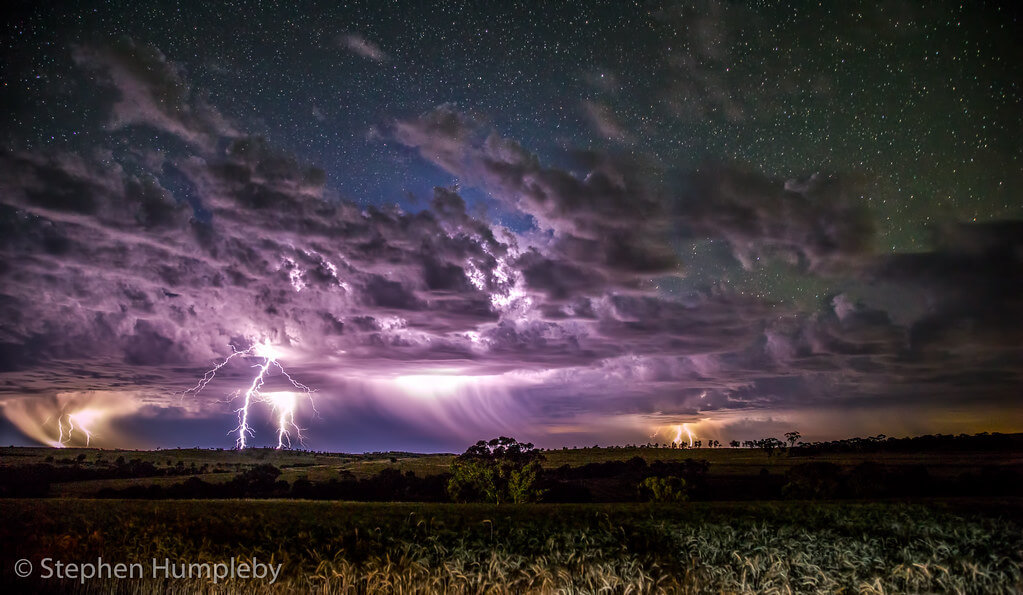
Fotis Mavroudakis – Natural pool Giola
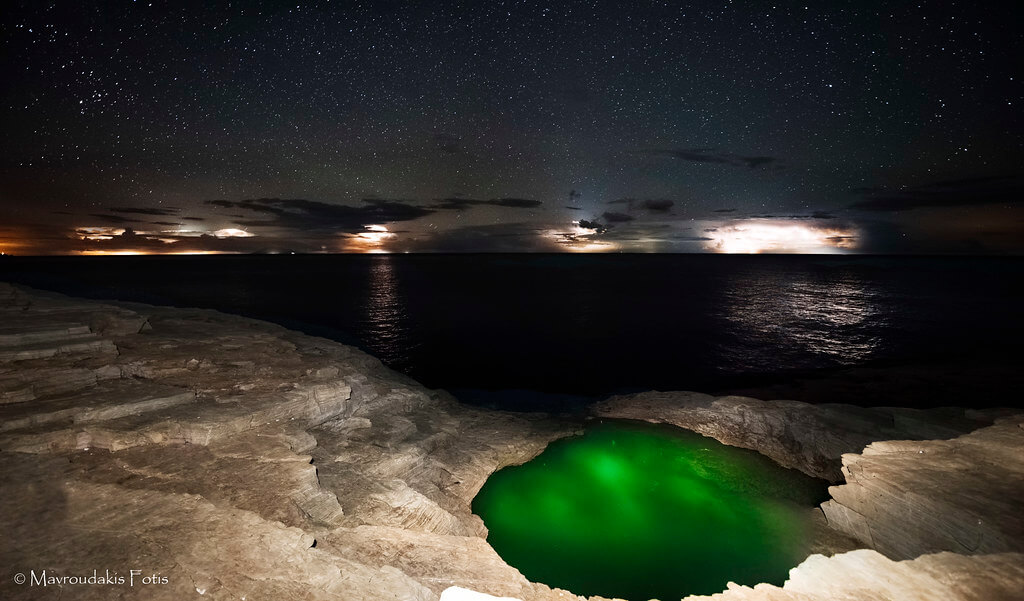
Dennis McKelroy – West Texas Storm
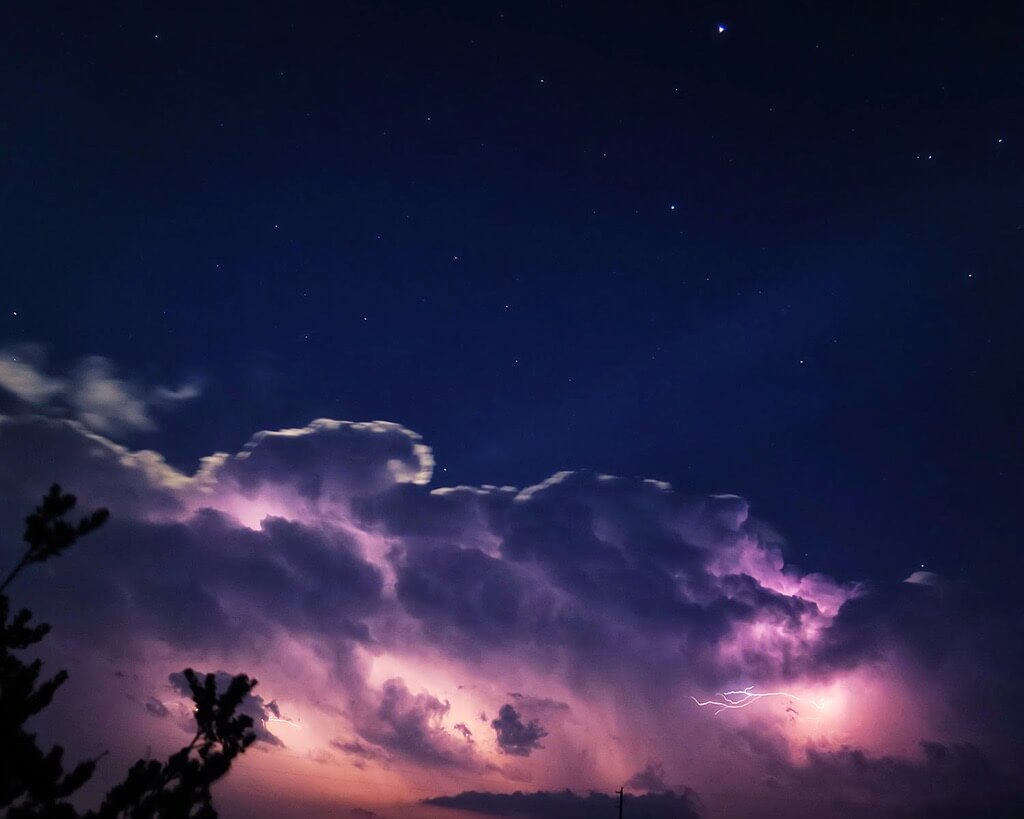
Capture a reflection of the lightning.
When you’re shooting lightning at a distance with a lot of darkness, the lightning bolt can end up looking small and insignificant, not the powerful force of nature that it is. By capturing the lightning’s reflection, you’ll instantly make it look bigger and more impressive without zooming in or moving closer.
Shooting a storm across a lake is one way to capture the lightning’s reflection. Harbors, oceans, and even wet pavement can provide this reflection. As long as you’re in a safe place, far away from the lightning, you can get awesome shots of the storm over water.
Gerardo “Tito” Paez – El martillo de Thor
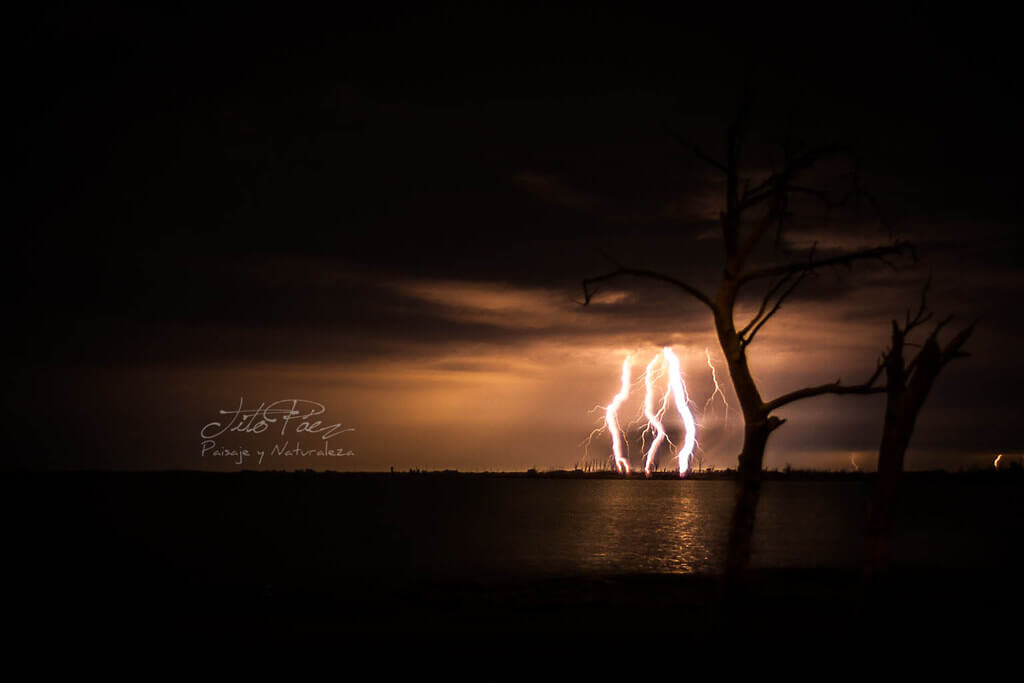
elliot keeney.- town beach lightning
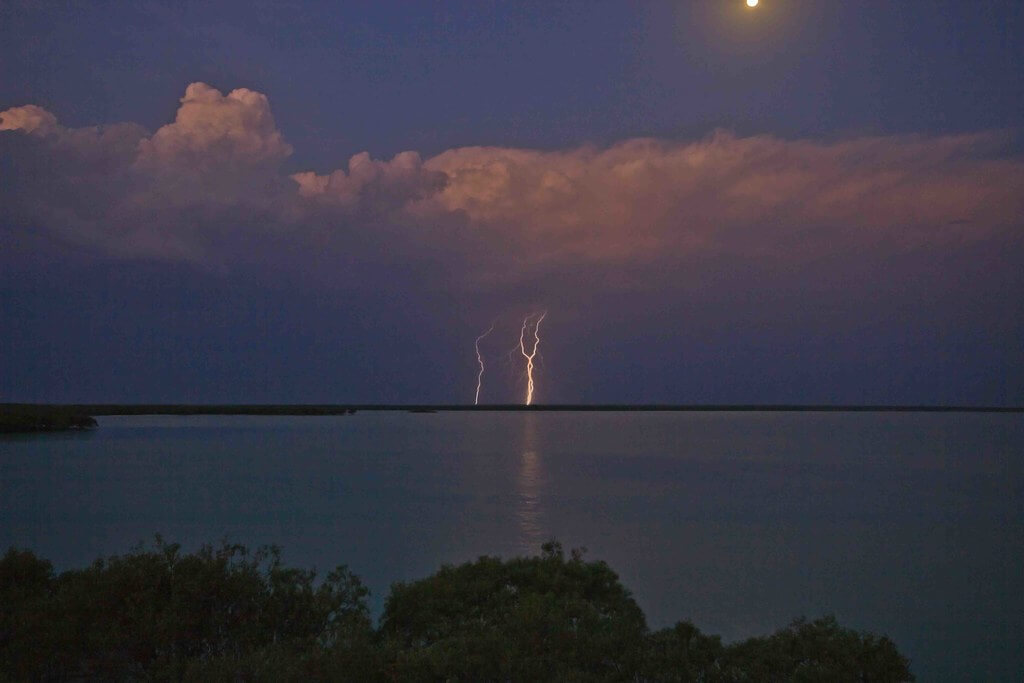
Fotis Mavroudakis – Lightning strike
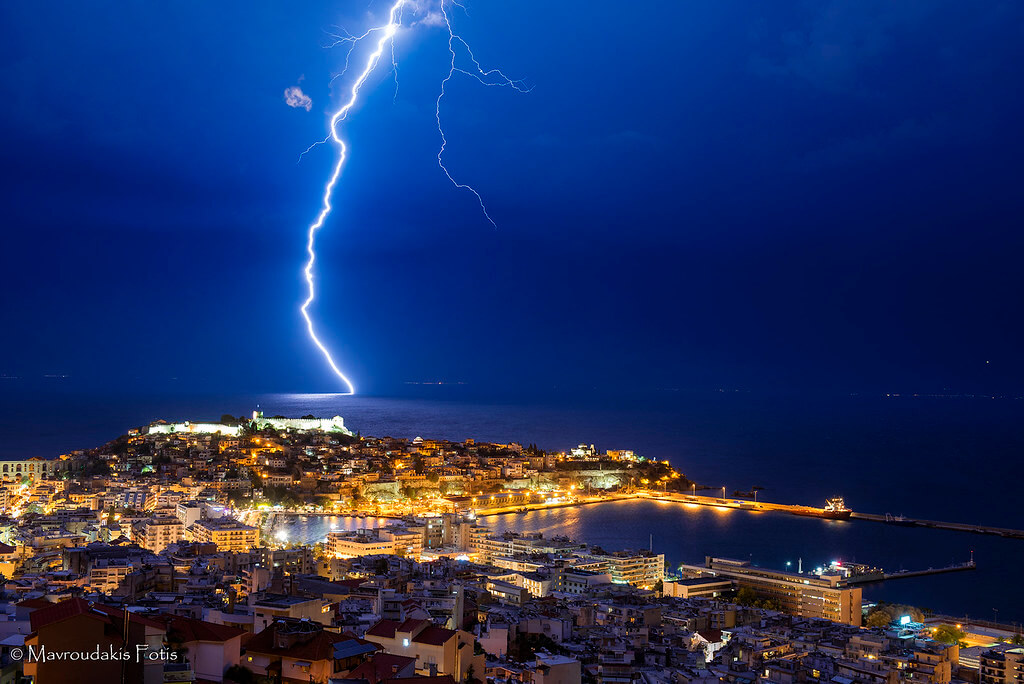
Joe Pellicone – Lightning at JFK Airport
![]()
Find a nice silhouette.
Darkness often comes with a big storm, even during the day. This darkness can create beautiful or spooky silhouettes, backlit by lightning. Besides trees and houses, you can get great silhouettes of mountains and other large subjects on the horizon. Storms are similar to sunsets in this way. They can turn any subject into a silhouette.
Sherri Yezbick-Taylor – Light Show on Lake Huron
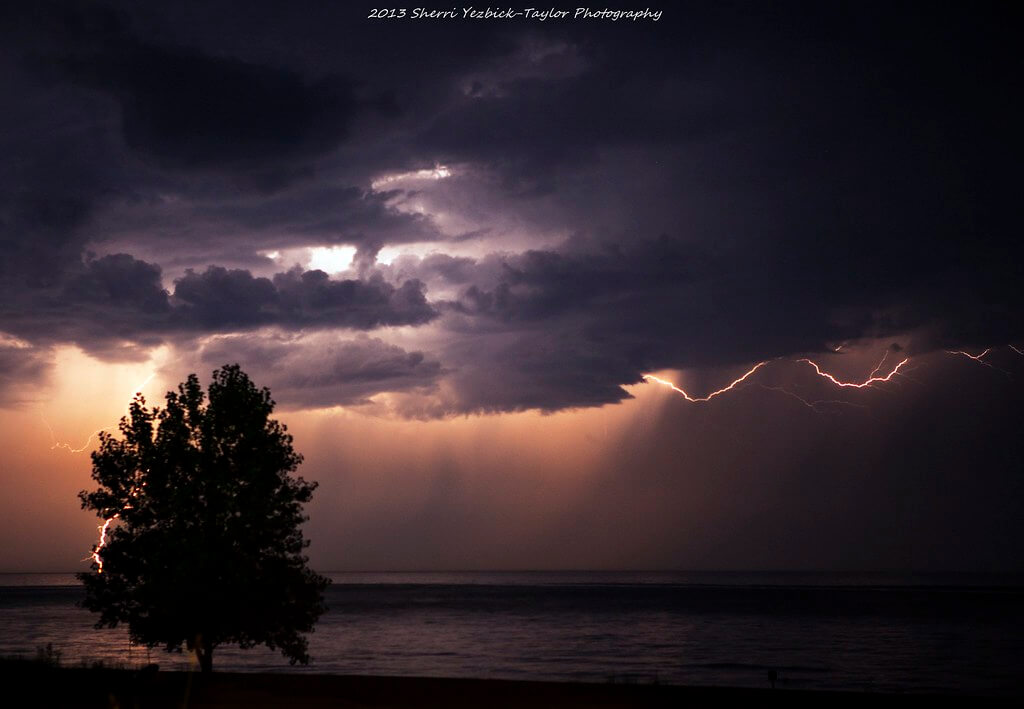
Lawrence Stevens – West Texas Desert Rain
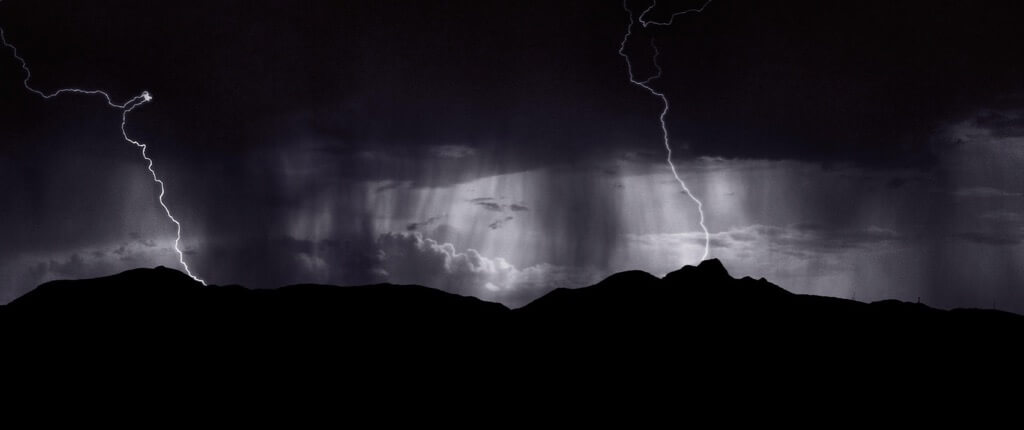
Benjamin Chase – Palouse Lightning
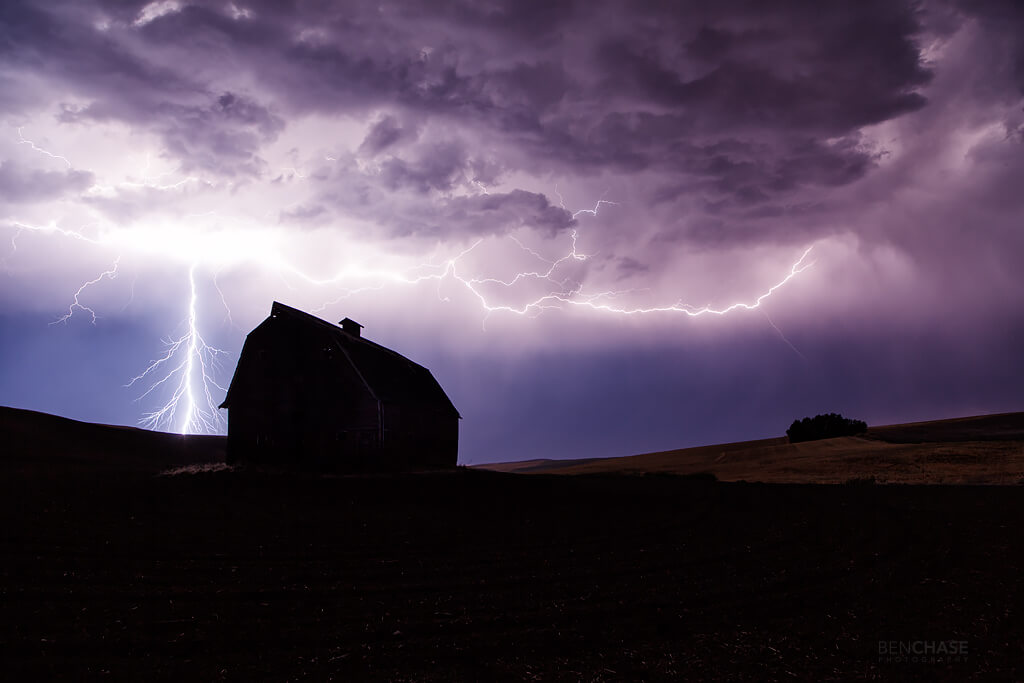
Robert Aagaard
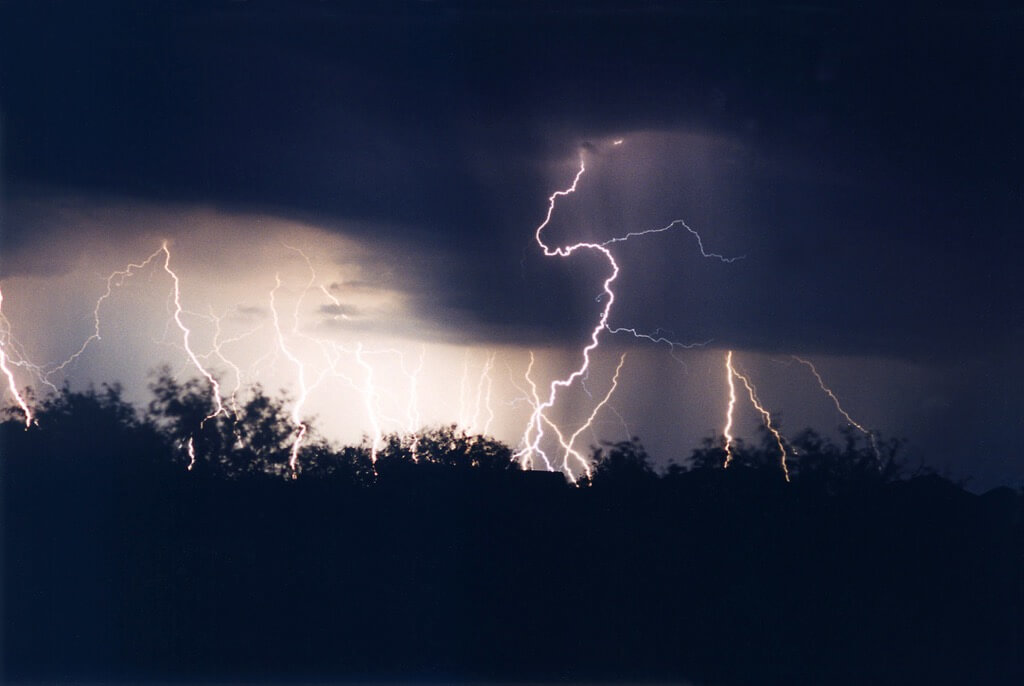
Fill the frame with sky.
Sometimes you can’t find anything eye-catching to shoot under a lightning storm. And that’s okay! The storm itself can be incredible enough to fill the whole frame. Even if the sky is pitch dark, you can create a nice minimalist photo with that darkness, putting all attention on the lightning.
Delyth Angharad – Lightning at Gordon’s Bay
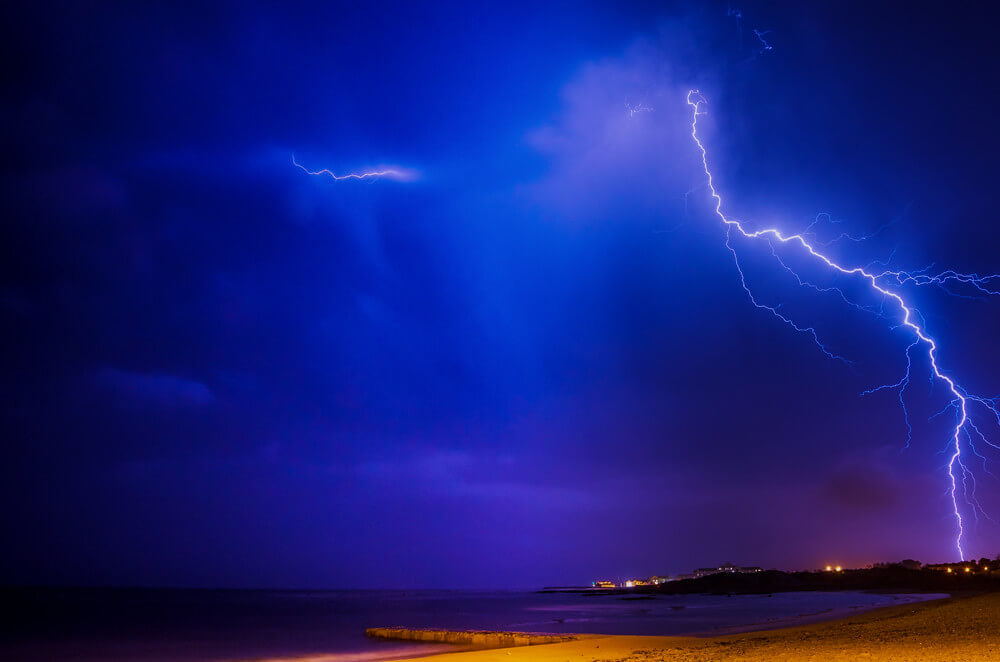
Scott Miller – Lightning in Laughlin, Nevada
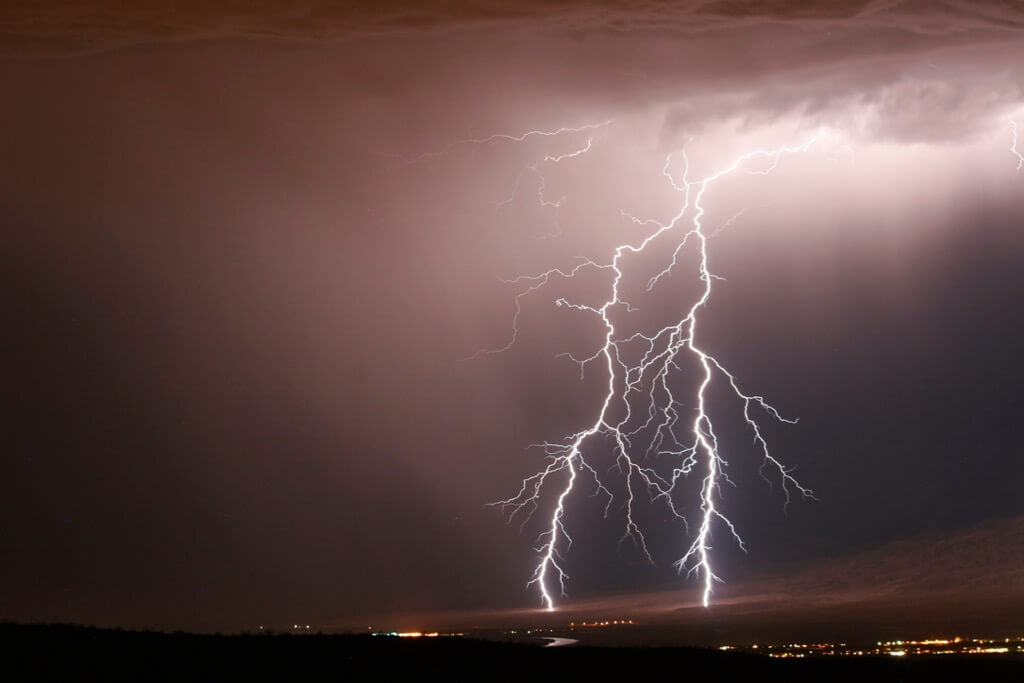
Focus on the amazing clouds.
If you’re lucky, the storm you’re shooting will have awe-inspiring clouds, which alone are worth a photo. In these images, it’s hard to say which is more impressive: the storm clouds or the lightning.
Similarly, volcanic lightning is so impressive partly because it’s one element in a stunning eruption. Though the average photographer won’t ever witness volcanic lightning, it’s an amazing sight to capture if you’re a volcanologist.
Ragnar Th Sigurdsson/Arctic-Images – Lightning and lava fountains in the ash cloud during the Eyjafjallajökull Volcanic Eruption, Iceland, April 18, 2010

Daniel Martin – Lightning in LaPasse, Ontario
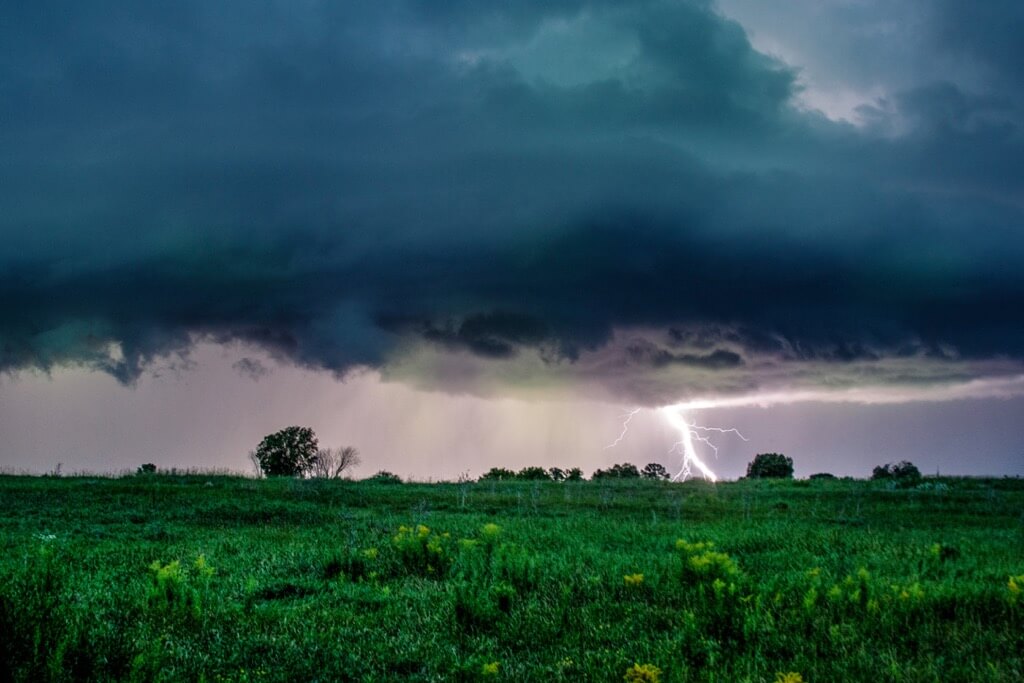
Experiment with black and white.
Stars, storm clouds, and city lights all pair well with lightning, but they can also distract from the lightning itself. With so much to see in the photo, viewers may not notice the brightness and intricate patterns of the lightning.
If you want to bring more attention to the lightning while also including other elements, consider shooting in black and white. Then, your image will emphasize contrast instead of color, making the lightning stand out with its brightness.
Tom Vela Chasing Light Photography – Lightning over SFO
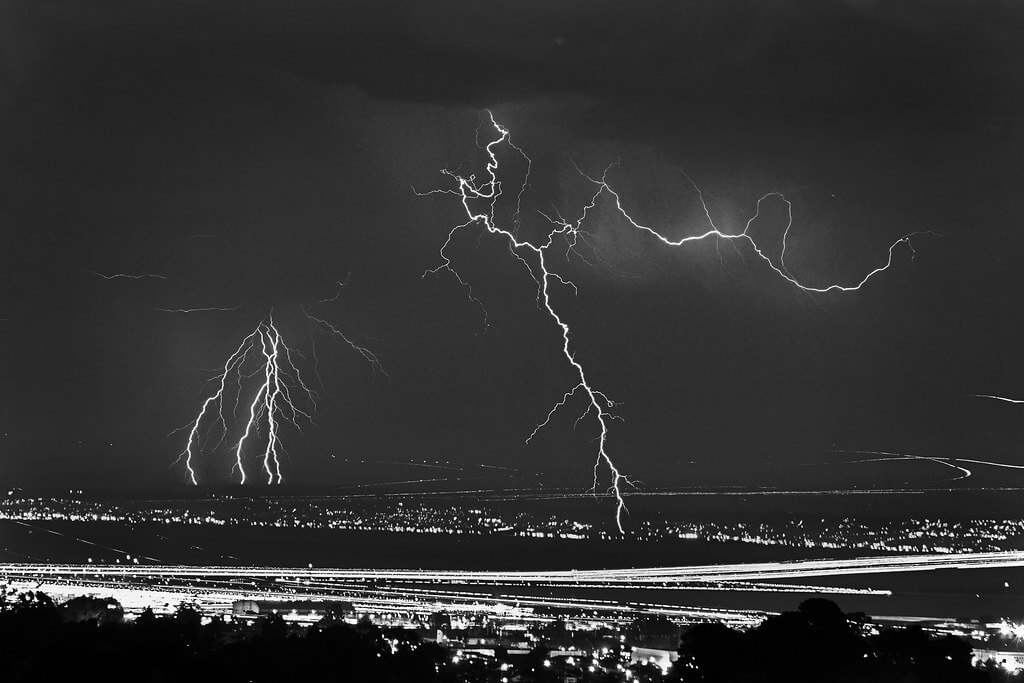
Andy Farmer – Thunderstorm Over Lake Michigan
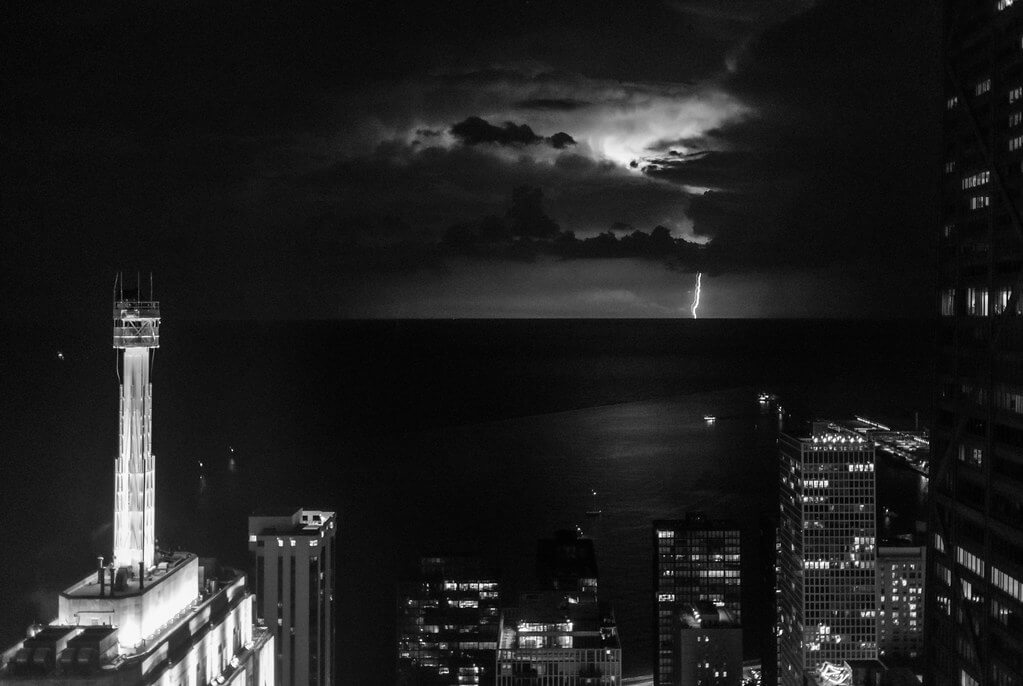
Emilio Küffer – Noches violentas
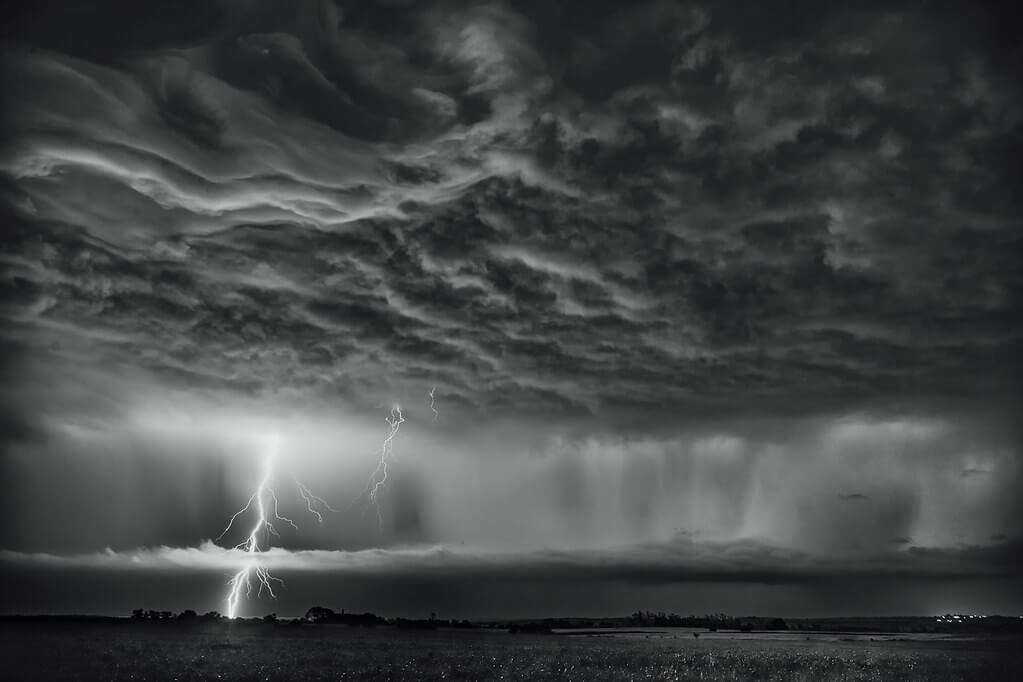
Take a long exposure.
Not getting enough “wow” from a single lightning bolt? Try taking a longer exposure to capture more lightning in your image. For example, you can set your shutter speed for 30 seconds and see what happens. If you’re lucky, you’ll get a lot of incredible lightning in those 30 seconds.
Sourabh Gandhi – Lightning storm
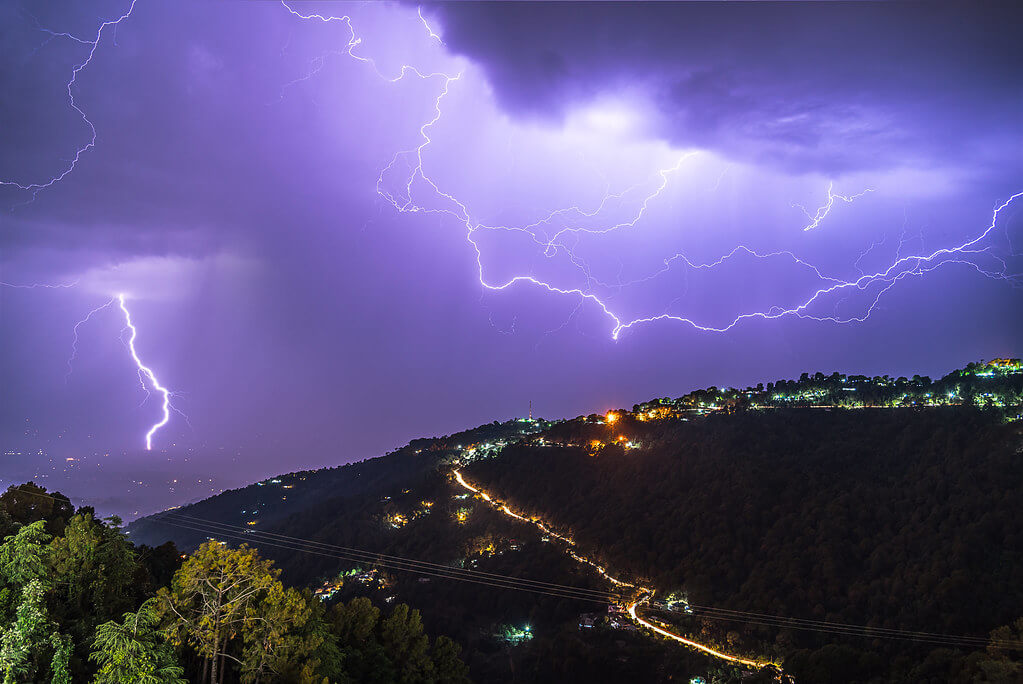
Howard Ferrier – All forks, no knives
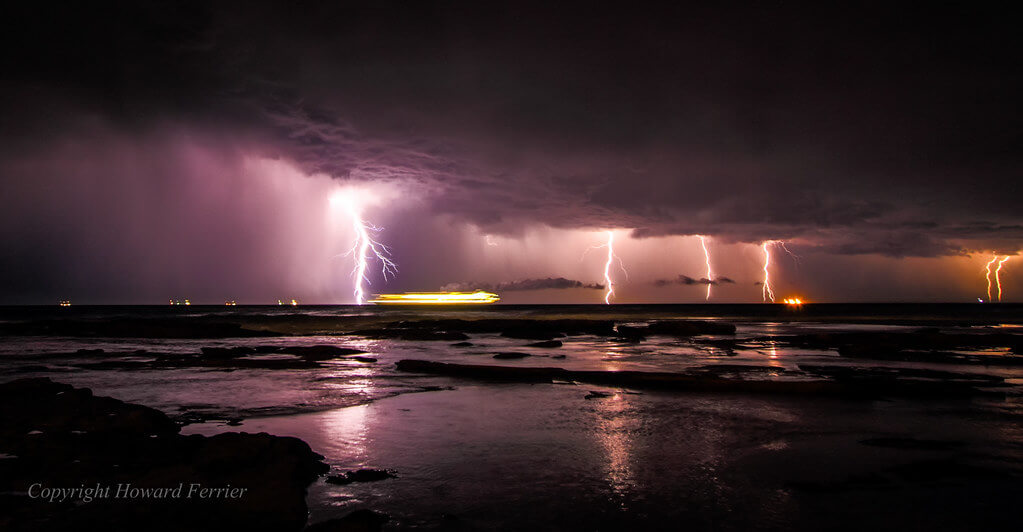
Work with composite photography.
Another way to create a sky full of lightning is to combine several shots in a composite photo. For instance, Michael Seeley created the image below by combining 43 shots, all taken within 27 minutes.
You can also combine a lightning photo with a totally different scene for a cool double exposure. If you don’t have any lightning pictures in your own portfolio, you can find lightning images in the public domain and combine those with your own work. You can even create “fake” lightning in Photoshop. Though it’s less authentic, it’s definitely the safest option!
Michael Seeley – Lightning pounds Satellite Beach, Florida
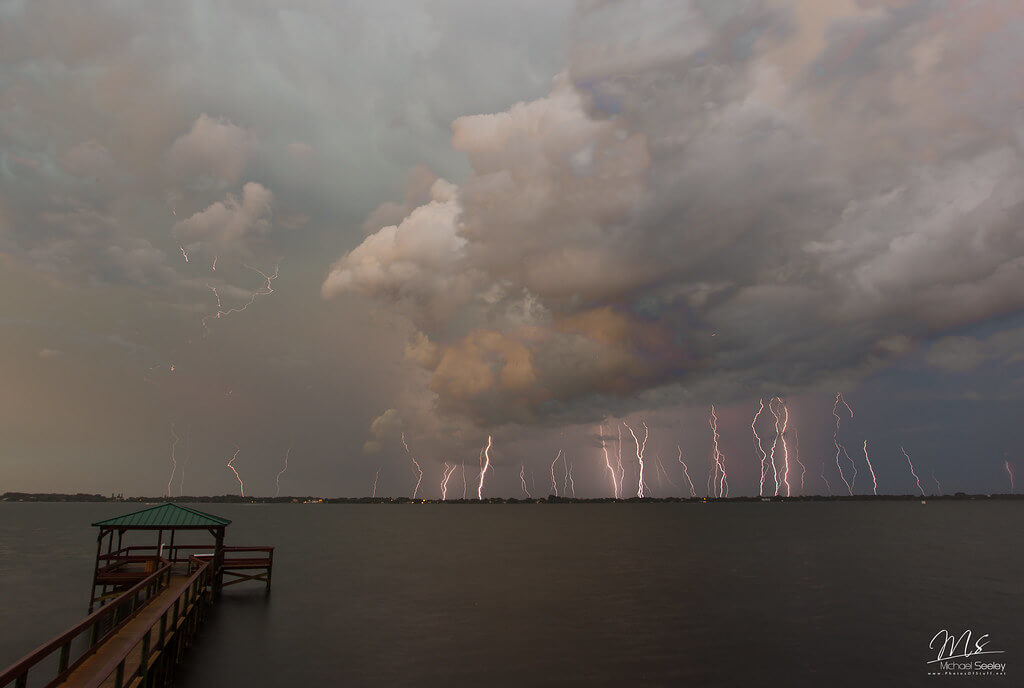
Mike Lewinski – Lightning composite

Bobbie Smith
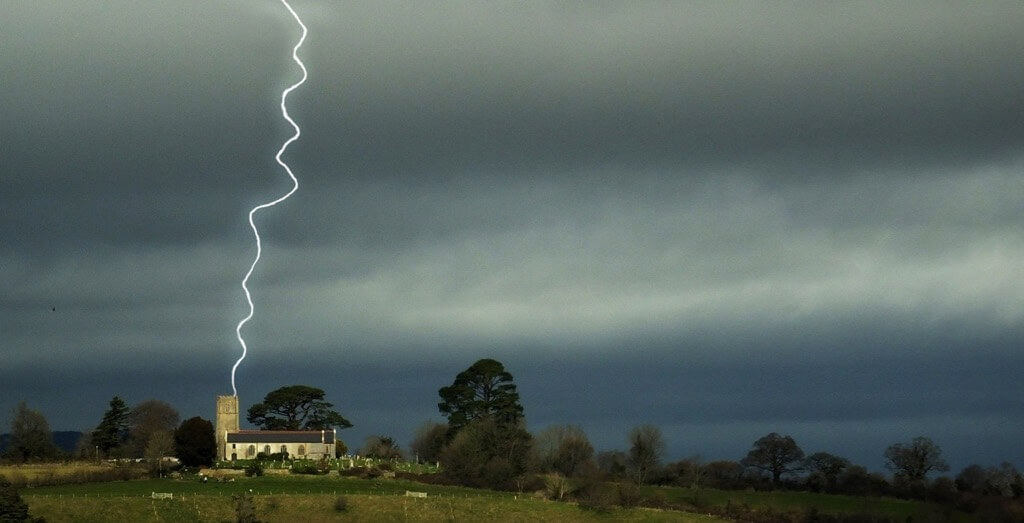
Kenny Wayne – Lightning over Hua Hin
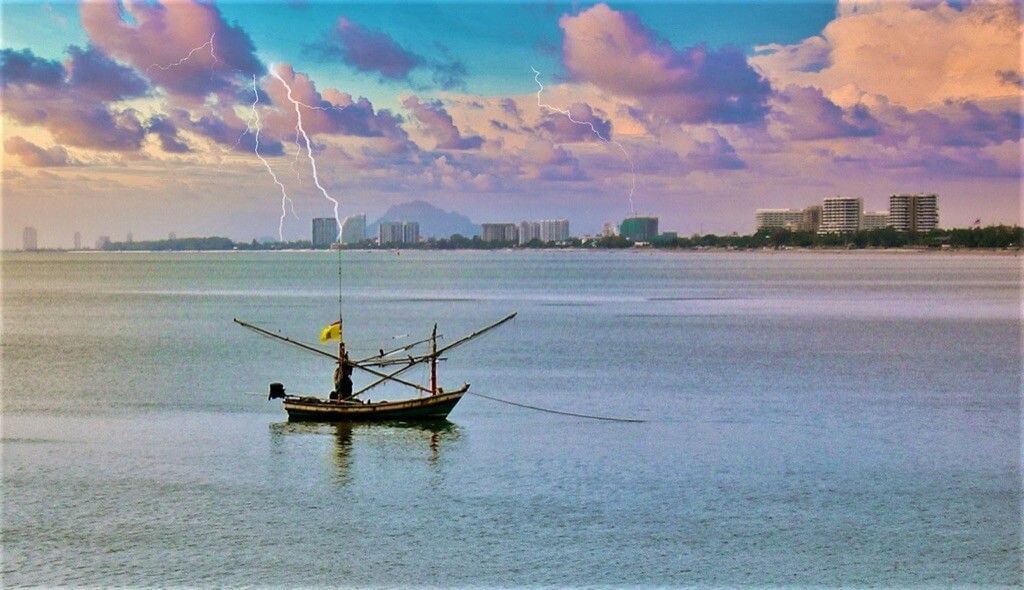
Manish (Valmie) Joshi – sunrise at river Yamuna – Mathura – India
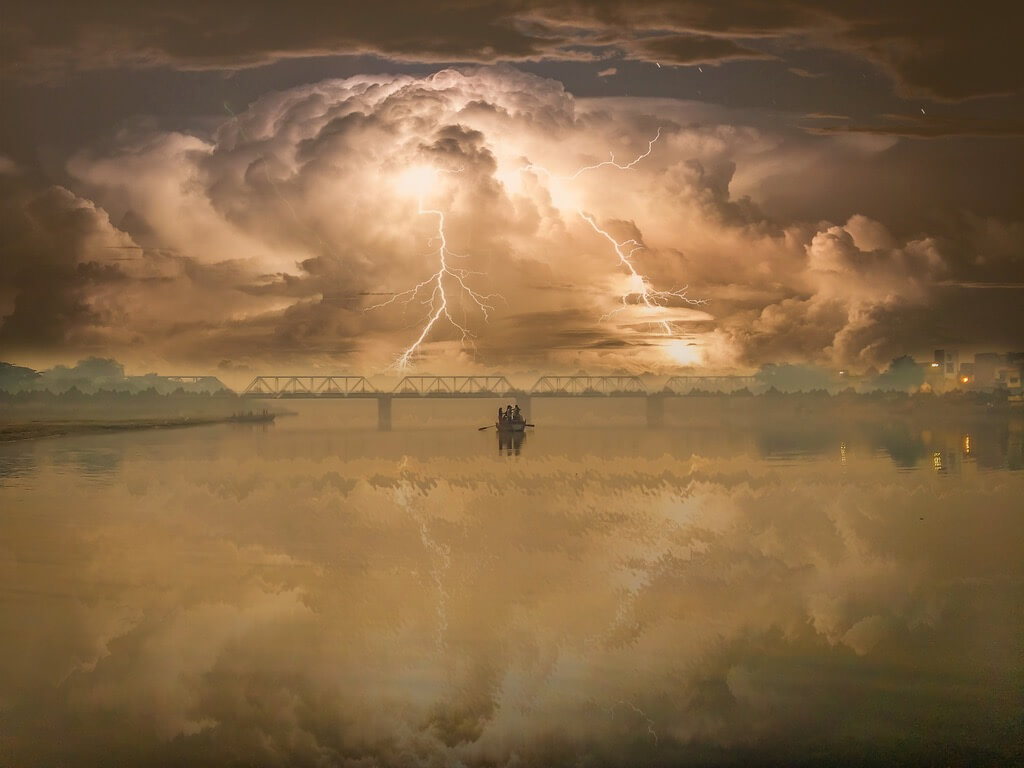
Many of the above images were selected from our community, both on Flickr and via our newsletter. We had a photography challenge for the topic “lightning” and received a lot of great images. Thanks again to all the photographers who participated!
